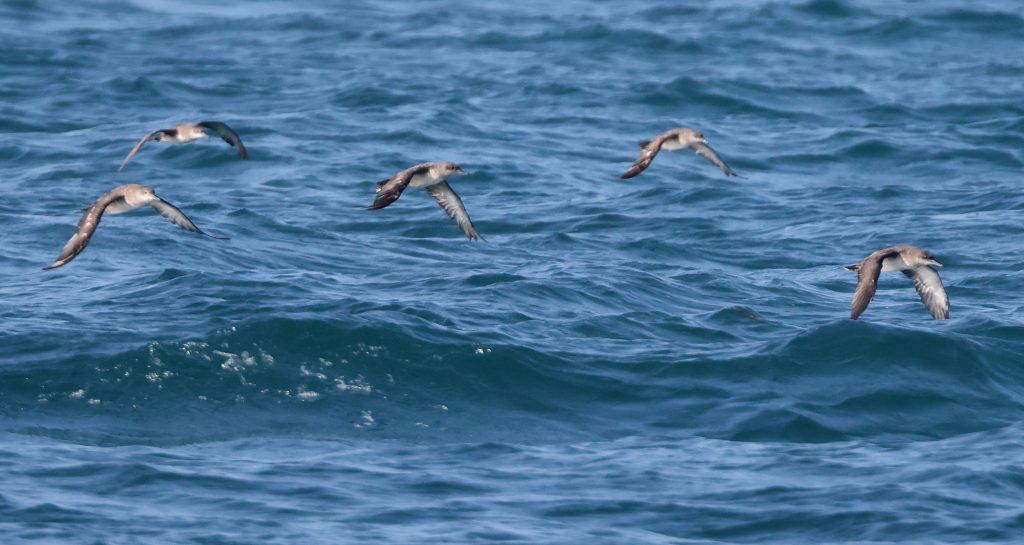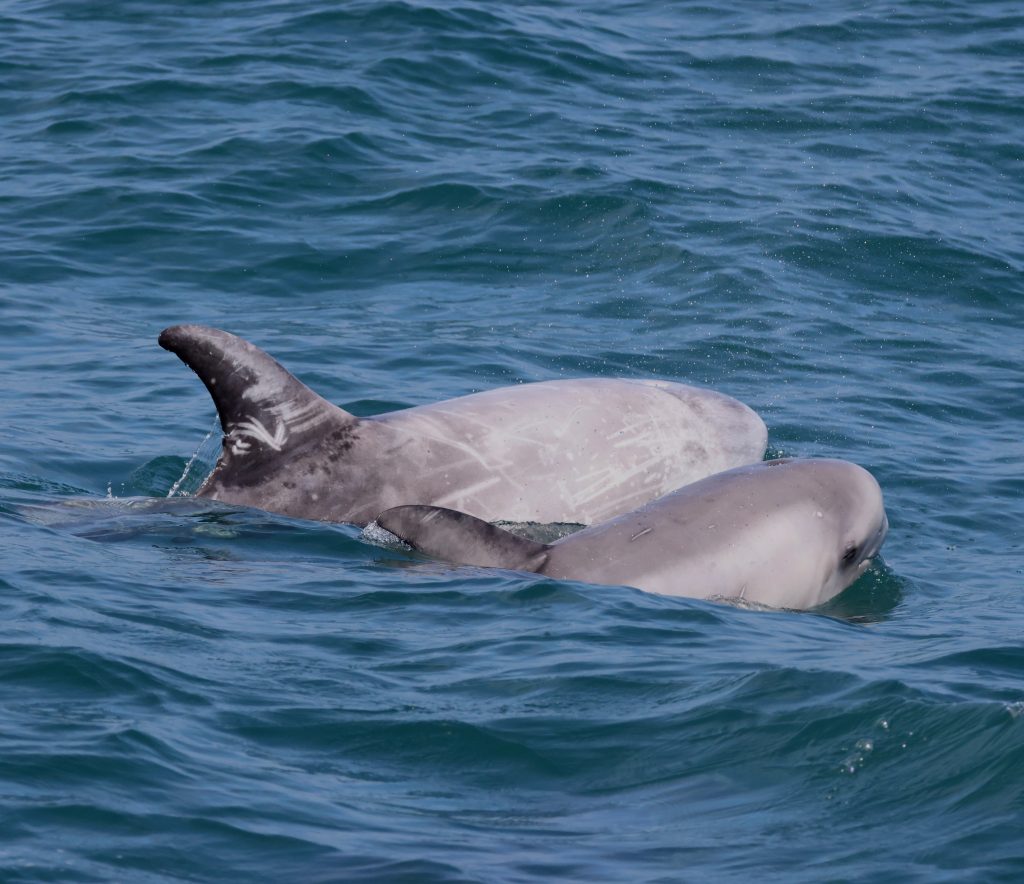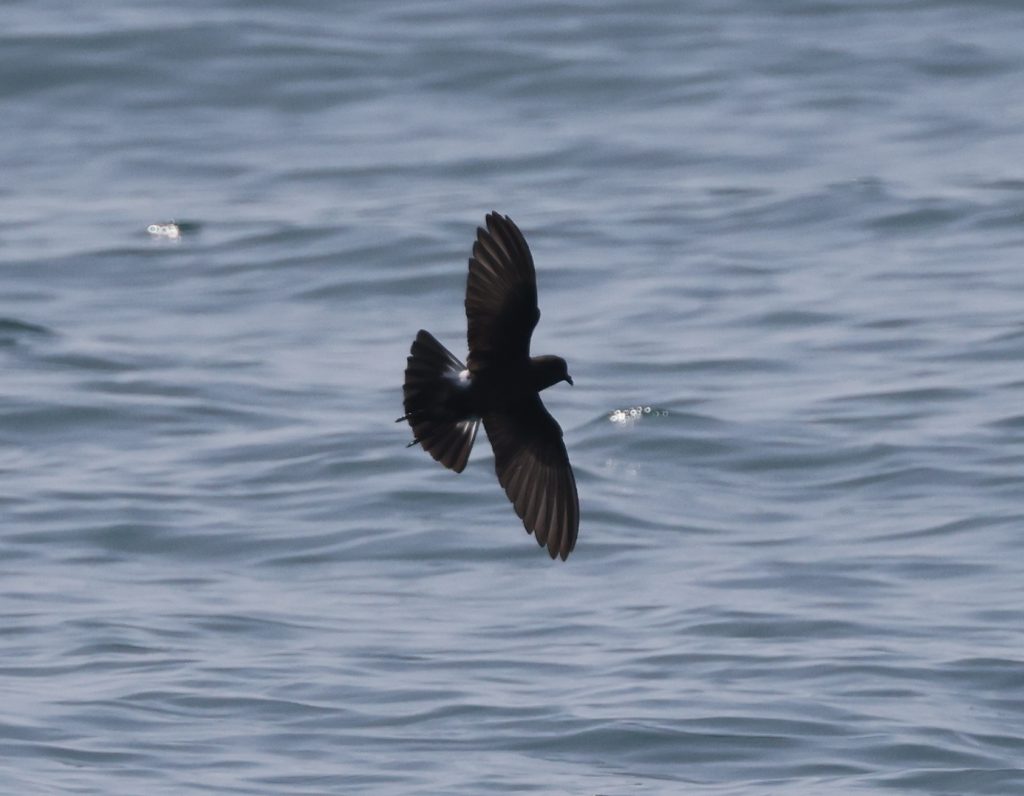 Record UK numbers of the critically endangered Balearic Shearwater arrive in Devon waters
Record UK numbers of the critically endangered Balearic Shearwater arrive in Devon waters
31 July 2025
Record UK numbers of Balearic Shearwater – a Critically Endangered seabird and the most globally threatened bird to occur regularly in the UK – have been seen in the Devon section of Lyme Bay.
The birds were monitored on the 24th of July through a survey conducted by the charity MARINElife on a Naturetrek ecotourism trip off the South Devon coast.
Professor Tom Brereton, MARINElife’s Research Director who conducted the survey, said: “We counted 1920 birds; surpassing the previous UK record site day count of 1145 made in 2023, by a startling 68%”.
“Warming sea temperatures were thought to have been the main driver for the influx, with the whole area surveyed teeming with seabirds, dolphins and jellyfish.”
The Balearic Shearwater is a Critically Endangered seabird confined as a nesting species to the Balearic Islands in the western Mediterranean. The seabird is in steep decline, with fewer than 3000 breeding pairs remaining, though the total population including non-breeding birds was last estimated at around 22000 individuals. Outside the nesting season Balearic Shearwaters move out of the Mediterranean and into the Atlantic.
The Balearic Shearwater is closely related to the Manx Shearwater, which nests in Devon and the UK. Both birds are distant relatives of albatrosses.
In recent years increasing numbers of post-breeding Balearic Shearwaters birds have shifted north from traditional moulting grounds in the Bay of Biscay to the English Channel, coinciding with warming sea temperatures and northward shifts in Anchovy and other pelagic fish.
South West England waters are now considered internationally important at times, with for example counts of over 1000 made in Devon, most recently 1,145 at Berry Head in September 2023 (a national record) and 1068 at Start Point in July 2020.
Boat surveys by the charity MARINElife and satellite tagging work by others have confirmed these birds are not just passing through but are actively using the waters as moulting and feeding grounds for weeks on end.
In recent days increasing numbers of Balearic Shearwaters had been recorded in South West England waters from coastal headlands, so expectations were high of seeing some birds on the 24th of July.
However, the number of sightings of this species were extraordinary and unprecedented, with over 30 feeding or resting flocks detected, spread across all sea areas surveyed: an area of 240 square kilometres. Professor Brereton added: “Given that only a fraction of Lyme Bay was sampled (less than 1%), it seems likely that were hundreds to many thousands more birds present, representing a high proportion of the world’s population”.
 “The South West marine environment is changing rapidly from plankton communities at the base of the chain, through to top predators such as Balearic Shearwaters. We must act quickly to ensure that species such Balearic Shearwater, Bluefin Tuna and other new arrivals are adequately protected whilst in our waters”. Continued monitoring of marine wildlife is vital as trends change.
“The South West marine environment is changing rapidly from plankton communities at the base of the chain, through to top predators such as Balearic Shearwaters. We must act quickly to ensure that species such Balearic Shearwater, Bluefin Tuna and other new arrivals are adequately protected whilst in our waters”. Continued monitoring of marine wildlife is vital as trends change.
Major threats to Balearic Shearwater include: accidental drowning in fishing nets, invasive predators, such as rats and cats, at breeding sites and climate change (shifting prey, storm mortality). Of concern, one bird was found entangled by sea angling gear on the survey, highlighting the bycatch issue.
The Balearic Shearwater sightings were only one highlight of an extraordinarily rich day for marine wildlife encounters, with a mix of familiar species and ones much rarer and brought in by warming sea temperatures here and elsewhere. Highlights included unusually large numbers of formerly rare Crystal Jellyfish, an Ocean Sunfish, three pods of Risso’s’ Dolphin and large numbers of Common Dolphin.
Risso’s Dolphin (below) have shown up in unprecedented numbers off the South West this summer, following a large influx of Mediterranean Octopus; a known prey item.

A rare Wilson’s Petrel (below) from the South Atlantic, more frequently seen in the Bay of Biscay, was seen and photographed for the first time in Devon waters, along with hundreds of Manx Shearwaters, Gannets, Kittiwakes and Guillemots.
 Andy Tucker, Managing Director of Naturetrek who oversees organization of the trip, said: “We were delighted to give our wildlife watching clients a trip of lifetime and at the same time contribute to vital research on this endangered species, one that is even rarer and more threatened with extinction than the Polar Bear.”
Andy Tucker, Managing Director of Naturetrek who oversees organization of the trip, said: “We were delighted to give our wildlife watching clients a trip of lifetime and at the same time contribute to vital research on this endangered species, one that is even rarer and more threatened with extinction than the Polar Bear.”

